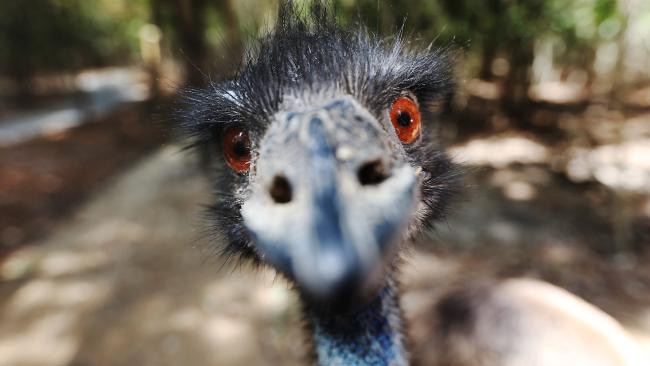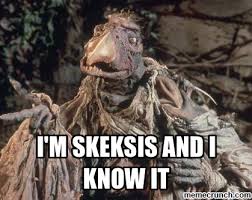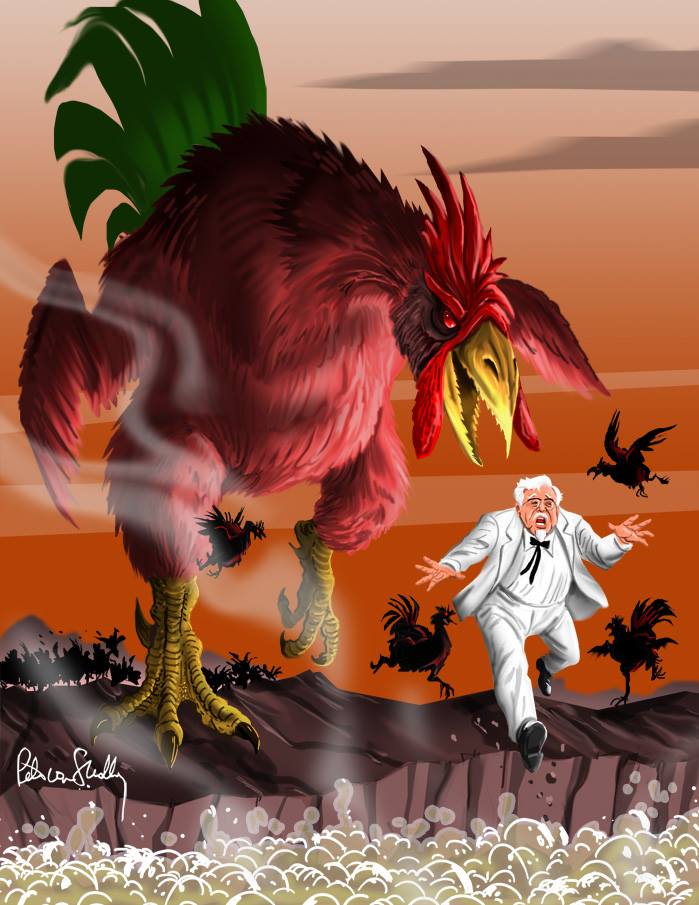It looks like you're using an Ad Blocker.
Please white-list or disable AboveTopSecret.com in your ad-blocking tool.
Thank you.
Some features of ATS will be disabled while you continue to use an ad-blocker.
6
share:
This is the story of Australia's most unusual war ...
a tale of two soldiers , Lewis machine guns , and
thousands of marauding emus !

www.news.com.au... n&utm_medium=cpc&utm_campaign=technology
uncyclopedia.wikia.com...
 Lord High Emu
Lord High Emu
en.wikipedia.org...
a tale of two soldiers , Lewis machine guns , and
thousands of marauding emus !

WHEN the green light was given for Australian soldiers
to launch a military offensive on home soil, it was done
so with haste.
Reports had been flocking in that a new enemy was
threatening the livelihoods of hardworking West Australians
— and something needed to be done fast.
It was 1932 and the country was still recovering from the
Great Depression.
The situation was desperate.
This new invader left nothing in its wake. Hordes would
obliterate everything in their sights.
The WA Government, distressed by the onslaught, made
a request to the Commonwealth for an immediate and
serious course of action.
Simply defending home soil would not be enough. Australia
needed to eradicate this new found enemy.
So Defence Minister Sir George Pearce gave the go-ahead to
launch a full military operation, now known as the
Great Emu Wars.
www.news.com.au... n&utm_medium=cpc&utm_campaign=technology
The Emu War, also known as the Great Emu War, was
a war fought between the country of Australia and a flock
of emus.
It is still remembered in Australia today as the greatest
defeat ever incurred on the Australian nation and her
subjects. It was fought from the 2nd to the 8th November
1932 between 20,000 emus, under the command of the
Lord High Emu, and 2 soldiers of the 7th Heavy Battery,
Royal Australian Artillery under the command of Major
G.P.W. Meredith. Each soldier was equipped with a
Lewis Machine Gun, 10,000 rounds of ammunition, and
both had received an award in clay pigeon shooting.
uncyclopedia.wikia.com...

Taking to the field on 13 November 1932, the military
found a degree of success over the first two days, with
approximately 40 emus killed. The third day, 15 November,
proved to be far less successful, but by 2 December the guns
were accounting for approximately 100 emus per week.
Meredith was recalled on 10 December, and in his report
he claimed 986 kills with 9,860 rounds, at a rate of exactly
10 rounds per confirmed kill.
en.wikipedia.org...
edit on 4-11-2015 by radarloveguy because: xxx
a reply to: radarloveguy
What a bizarre story....Australia really does have a colorful history.....
I take it then the emu's had good dodging skills...10 rounds to a killl....lol...
Thx for sharing
What a bizarre story....Australia really does have a colorful history.....
I take it then the emu's had good dodging skills...10 rounds to a killl....lol...
Thx for sharing
a reply to: radarloveguy
www.nrm.wa.gov.au...
In other developments , starlings have been recruited by Lord High Emu
as allies in in their axis of eating ....!
Starlings are present to the east of the WA border,
and ongoing surveillance, trapping and culling is being
undertaken by the Department of Agriculture and Food,
Western Australia to reduce populations and limit the
further spread of the species.
The aim of this project is to enhance surveillance,
trapping, shooting and nest removal of starlings from
the South Coast region of Western Australia, with the
view to eradication.
www.nrm.wa.gov.au...
In other developments , starlings have been recruited by Lord High Emu
as allies in in their axis of eating ....!
a reply to: radarloveguy
Great thread.
I do hope "non-aussies" dont come along to cry over the emus....
remsset.com...
Great thread.
I do hope "non-aussies" dont come along to cry over the emus....
remsset.com...
Females can lay up to 60 eggs per season. The average egg production for a hen is 30 to 40 eggs
I was chased by an Emu once, I should gave let go of the bread bag. Suddenly there was a whole herd of the flockers after me which is when I dropped
the bread and made my escape from the raptors... I mean Emus.
We may not have won the battle in the 30s but I reckon we won the war, when was the last time you saw an emu causing any trouble?
Outsiders may see the comparative casualty rate and say it was unfair but what they most likely dont understand is that even today emus havent really assimilated and realistically contribute very little to society.
While i detest war, as an Aussie who loves our culture and way of life I feel this war was justified if only to put the emus in their place and let them know who was boss.
AUSSIE AUSSIE AUSSIE
P.S Anyone else think emus look like the Skeksis from The Dark Crystal?


Outsiders may see the comparative casualty rate and say it was unfair but what they most likely dont understand is that even today emus havent really assimilated and realistically contribute very little to society.
While i detest war, as an Aussie who loves our culture and way of life I feel this war was justified if only to put the emus in their place and let them know who was boss.
AUSSIE AUSSIE AUSSIE
P.S Anyone else think emus look like the Skeksis from The Dark Crystal?


edit on 4/11/2015 by IkNOwSTuff because: (no reason given)
a reply to: IkNOwSTuff
oi oi oi.
...The one thing I don't understand is that if they were going to kill that many emus, why not eat them?
My parents were both born in the '40s, and remember THEIR parents struggling in the post-war period, with food being incredibly expensive and good meat hard to come by.
Seems like a lot of decent meat went to waste.
oi oi oi.
...The one thing I don't understand is that if they were going to kill that many emus, why not eat them?
My parents were both born in the '40s, and remember THEIR parents struggling in the post-war period, with food being incredibly expensive and good meat hard to come by.
Seems like a lot of decent meat went to waste.
originally posted by: Awen24
a reply to: IkNOwSTuff
oi oi oi.
Seems like a lot of decent meat went to waste.
They certainly have big breasts ,... but scrawny legs .
Reckon they'd taste a little gamey , but prolly betteran 'roo !
originally posted by: IkNOwSTuff
Outsiders may see the comparative casualty rate and say it was unfair but what they most likely dont understand is that even today emus havent really assimilated and realistically contribute very little to society.
They still managed to find their way onto the coat of arms
so they must have negotiated a truce and become part of the political process !?
originally posted by: radarloveguy
originally posted by: Awen24
a reply to: IkNOwSTuff
oi oi oi.
Seems like a lot of decent meat went to waste.
They certainly have big breasts ,... but scrawny legs .
Reckon they'd taste a little gamey , but prolly betteran 'roo !
Better than Roo????
Have you ever tasted Roo?
It is easily one of the tastiest and juiciest meats youll ever eat
As for emu it is a bit gamey but still yummo, kinda a mix between beef and chicken.
I highly recommend both
a reply to: IkNOwSTuff
LOL....definitely a lough out loud moment....very funny thx for the giggle
Outsiders may see the comparative casualty rate and say it was unfair but what they most likely dont understand is that even today emus havent really assimilated and realistically contribute very little to society.
LOL....definitely a lough out loud moment....very funny thx for the giggle
a reply to: weirdguy
I imagine that it was something like this:

You're lucky to be alive.
I was chased by an Emu once, I should gave let go of the bread bag. Suddenly there was a whole herd of the flockers after me which is when I dropped the bread and made my escape from the raptors... I mean Emus.
I imagine that it was something like this:

You're lucky to be alive.
new topics
-
Christmas Car Near Detroit…
Automotive Discussion: 1 hours ago -
Assetto Corsa EVO - a New Chapter in Simracing starts January 16th
Video Games: 4 hours ago -
The Phenomenon documentary by James Fox
Aliens and UFOs: 7 hours ago -
New UK Petition - Close the borders! Suspend ALL immigration for 5 years!
Regional Politics: 8 hours ago -
The Looking Glass - Episode 3: The Path of Least Resistance
Short Stories: 11 hours ago
top topics
-
Treasury Secretary Janet Yellen Says The USA Will Be in Debt Default in Jan 2025 - Unless...
Mainstream News: 17 hours ago, 8 flags -
Credit card debt
Relationships: 13 hours ago, 7 flags -
The Phenomenon documentary by James Fox
Aliens and UFOs: 7 hours ago, 7 flags -
President-elect Trump asks the Supreme Court to Let Tik-Tok Continue Operating in the U.S..
Mainstream News: 13 hours ago, 6 flags -
Christmas Car Near Detroit…
Automotive Discussion: 1 hours ago, 4 flags -
The Looking Glass - Episode 3: The Path of Least Resistance
Short Stories: 11 hours ago, 3 flags -
New UK Petition - Close the borders! Suspend ALL immigration for 5 years!
Regional Politics: 8 hours ago, 2 flags -
Assetto Corsa EVO - a New Chapter in Simracing starts January 16th
Video Games: 4 hours ago, 2 flags
active topics
-
-@TH3WH17ERABB17- -Q- ---TIME TO SHOW THE WORLD--- -Part- --44--
Dissecting Disinformation • 3833 • : Thoughtful3 -
Treasury Secretary Janet Yellen Says The USA Will Be in Debt Default in Jan 2025 - Unless...
Mainstream News • 29 • : WeMustCare -
The Phenomenon documentary by James Fox
Aliens and UFOs • 3 • : introufo2 -
Plane Crash Today --Azerbaijanian E190 passenger jet
Mainstream News • 62 • : Oldcarpy2 -
President-elect Trump asks the Supreme Court to Let Tik-Tok Continue Operating in the U.S..
Mainstream News • 21 • : GENERAL EYES -
Instrumental Surf Music - Origins to the Present Day
Music • 249 • : underpass61 -
Post A Funny (T&C Friendly) Pic Part IV: The LOL awakens!
General Chit Chat • 7965 • : KrustyKrab -
Trump's idea to make Canada the 51st US state: 'Potential is massive'
Mainstream News • 102 • : Oldcarpy2 -
Russia Ukraine Update Thread - part 3
World War Three • 6899 • : gortex -
The Looking Glass - Episode 3: The Path of Least Resistance
Short Stories • 4 • : BingoMcGoof
6
